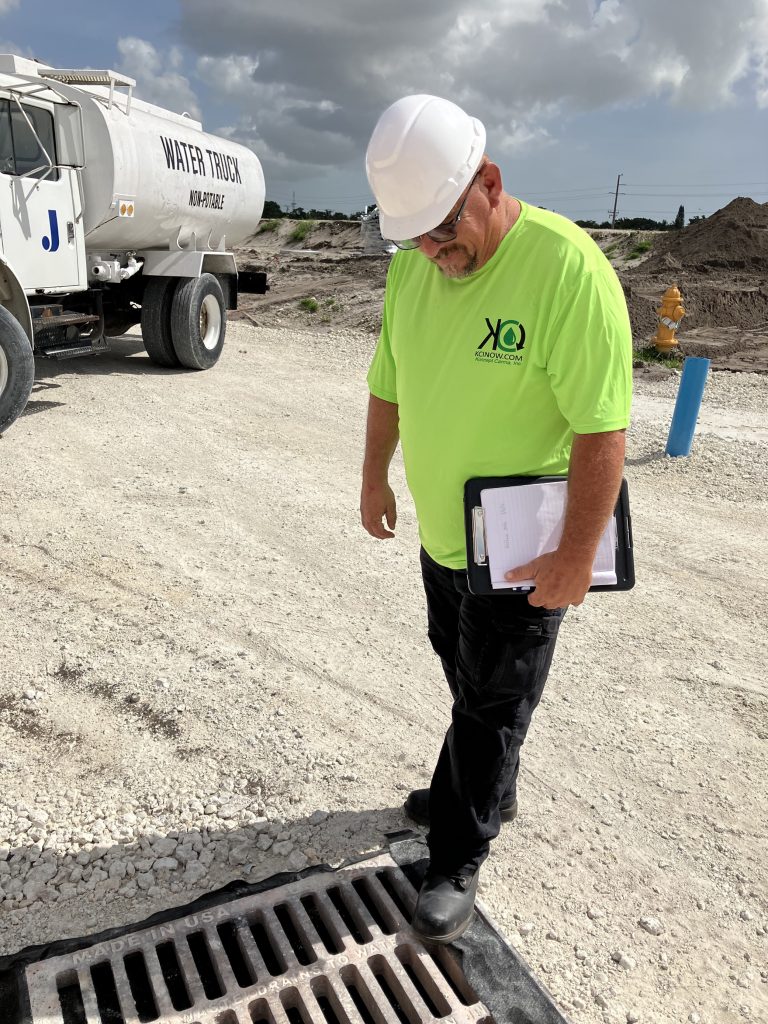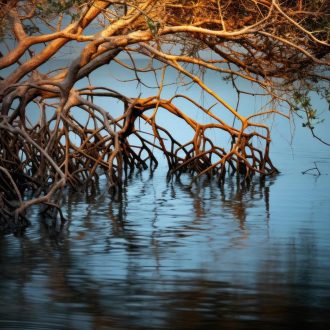
Performing the regulatory compliance required inspection is considered a non-structural Best Management Practice (BMP). Stormwater management involves the control and mitigation of stormwater runoff on construction sites to prevent flooding, erosion, and pollution of water bodies. Routine and rain event inspections play a significant role in this process.
Performing a stormwater inspection is typically a primary component of stormwater management. Performing inspections can be categorized as a non-structural BMP when they involve regularly inspecting stormwater facilities, such as various structural BMPs to ensure they are functioning as intended.

One of the most important requirements of the Florida Construction Generic Permit (CGP) is the National Pollutant Discharge Elimination System (NPDES) Inspections. In the State of Florida, NPDES inspections have 2 components: routine inspections and storm event inspections. One primary difference between the two is frequency.
Routine inspections must be conducted once every 7 days, not once a calendar week. There should never be a lapse of more than 7 days between routine inspections. A routine stormwater inspection involves a thorough systematic approach to stormwater management infrastructure and practices to ensure that they are functioning as intended and in compliance with regulations. A routine inspection will take time to effectively assess, review, discover, and document the appropriate compliance inspection criteria. During a routine inspection, a qualified stormwater consultant and Inspector will review records and documentation related to stormwater management, such as permits, plans, maintenance logs, and previous inspection reports. This helps ensure that the site is following established protocols and meeting regulatory requirements.
Rain event inspections are weather-dependent. A rain event is classified as a rainfall event with greater than 0.5 inches of rain. A rain event must not have a period greater than 4 hours between rainfall events. Rain event inspections are focused on assessing the condition of various stormwater infrastructure such as stormwater drains, culverts, detention basins, and retention ponds. This assessment ensures that these structures are in proper working condition and can handle the increased flow of water during rain events.

A last component to a routine inspection would be a monthly inspection that is conducted each month as long as the project is temporarily stabilized. Construction sites may opt to temporarily stabilize their site if construction activities are suspended, and they plan to resume.
An important requirement regarding rain events is that an NPDES inspection must be conducted on site within 24 hours at the end of a rain event. KCI is dedicated to tracking rainfall on your site using local weather and other highly accurate supporting applications. Every site is monitored daily, and our qualified inspectors are ready to inspect your site within 24 hours.
Find out how KCI can make it happen and relieve the tension in performing NPDES inspections, timely and accurately. Call us today at 888.346.7779.



